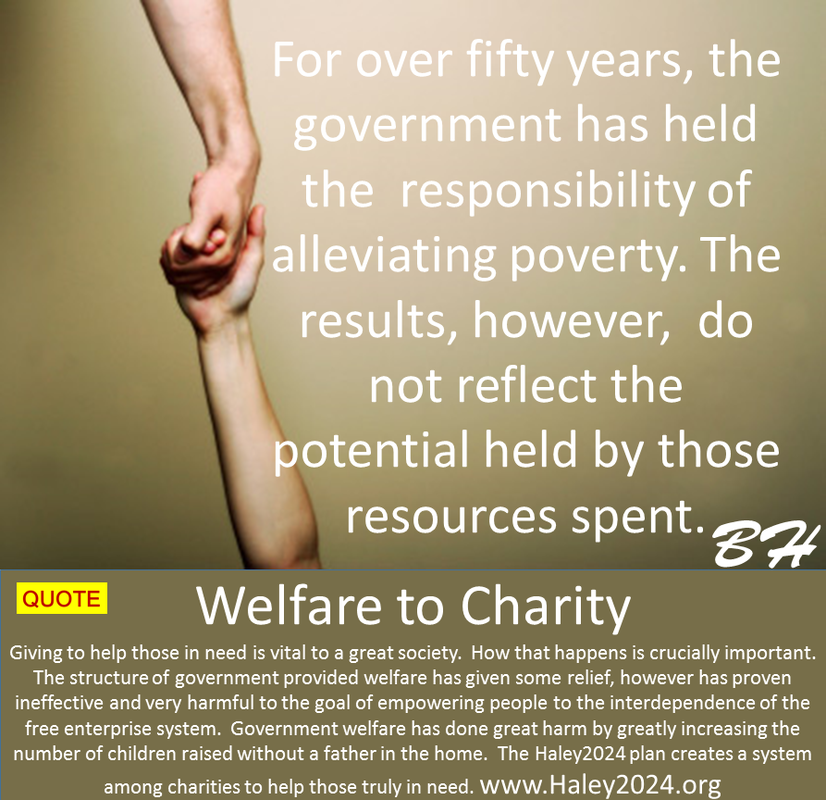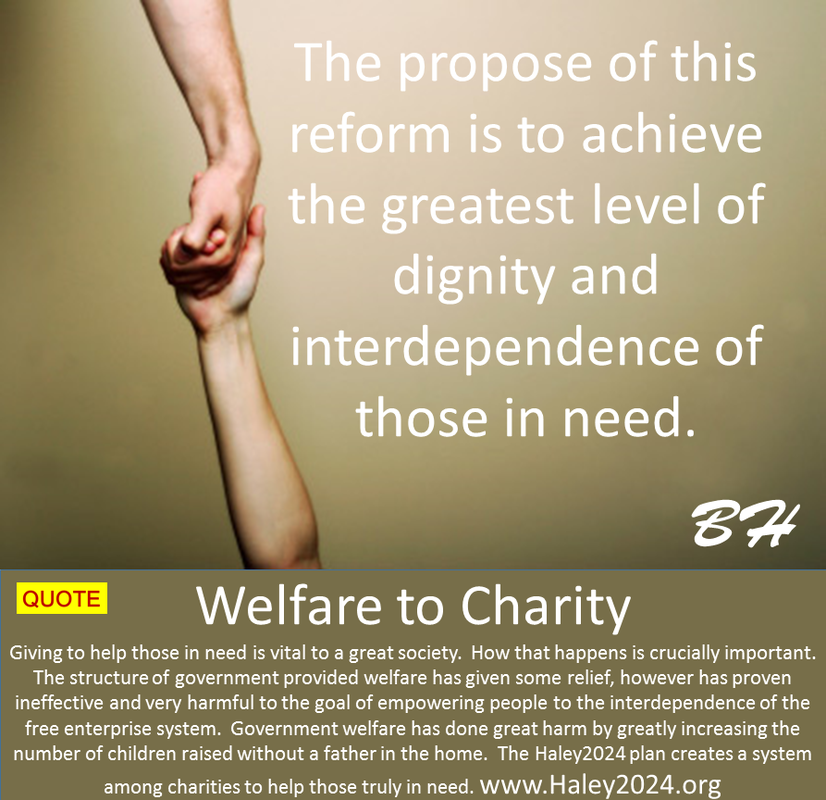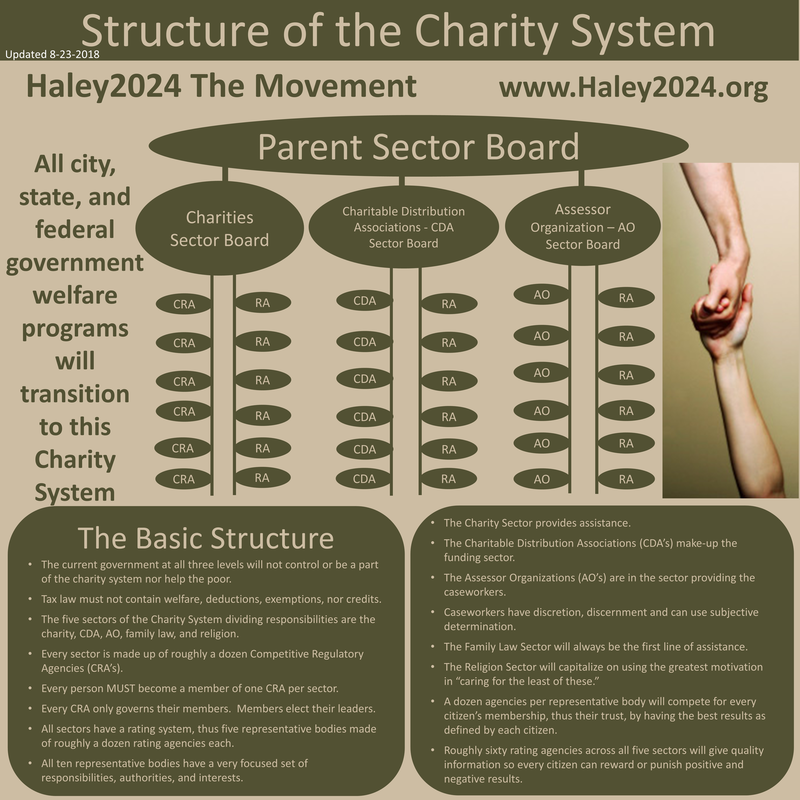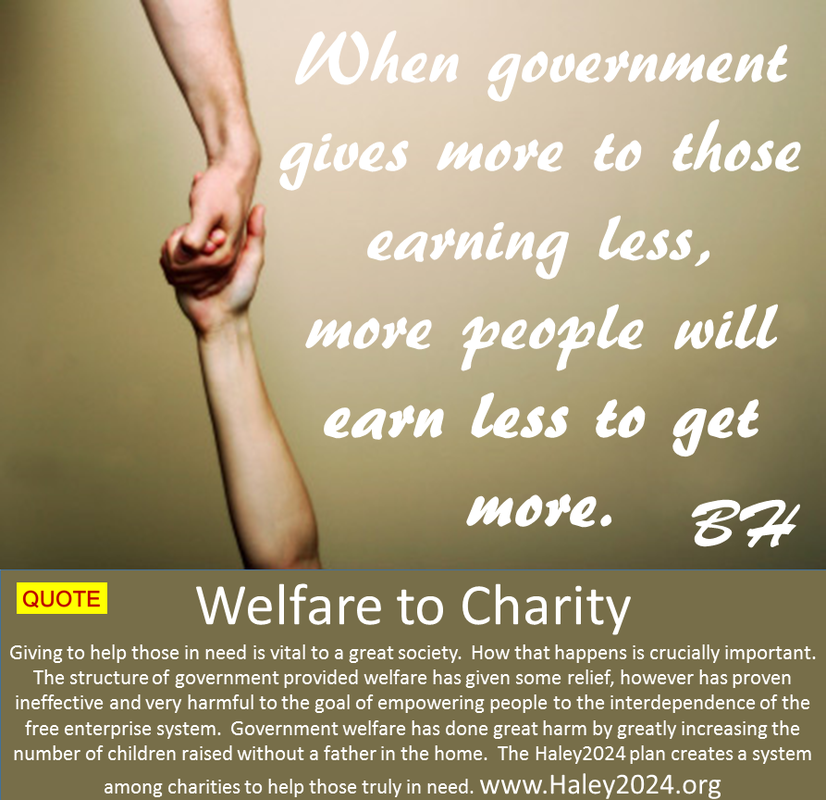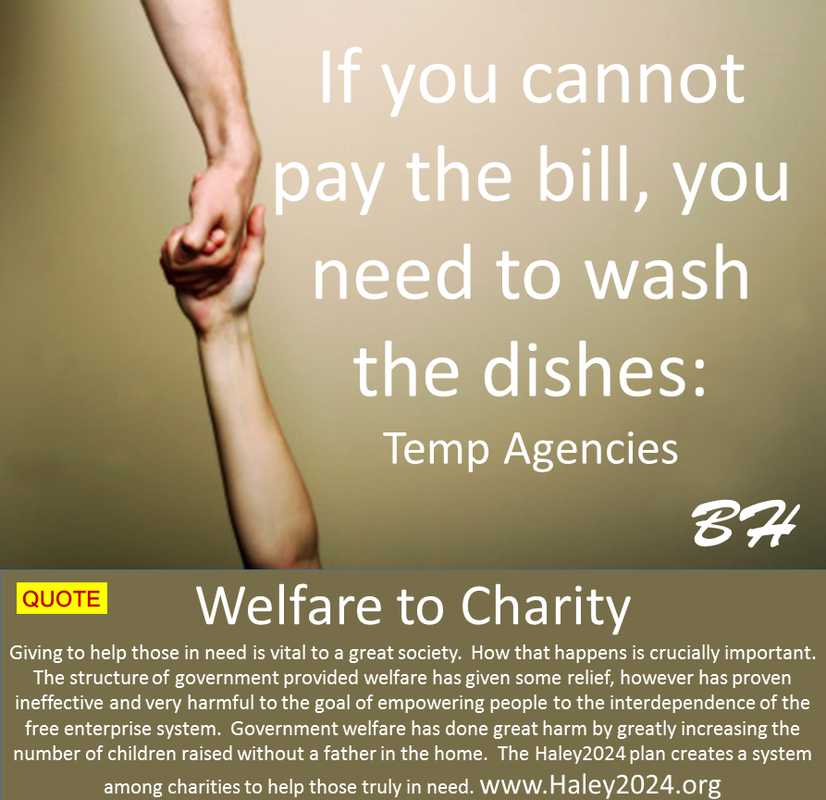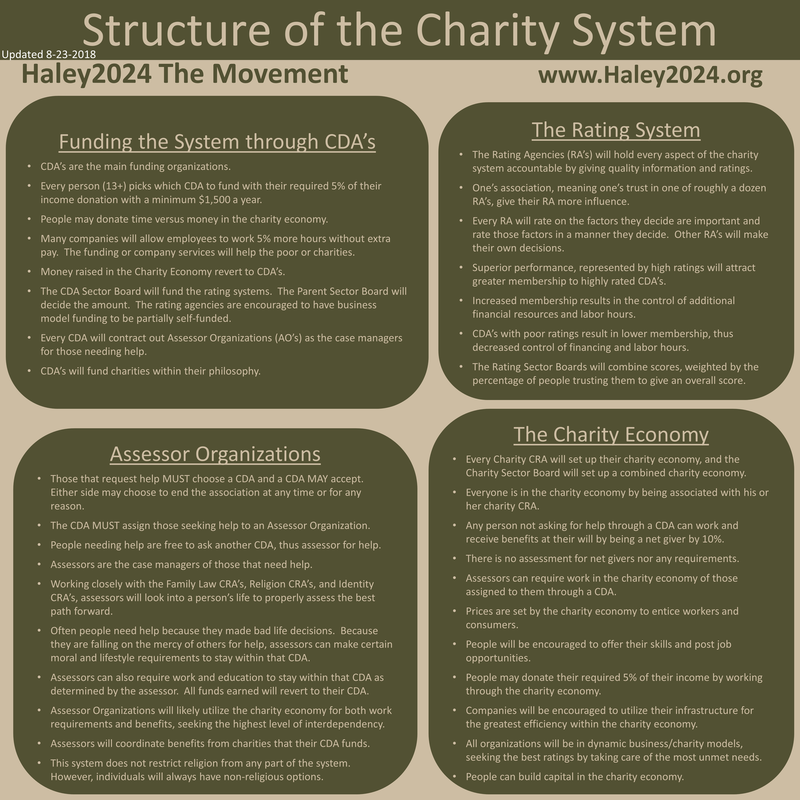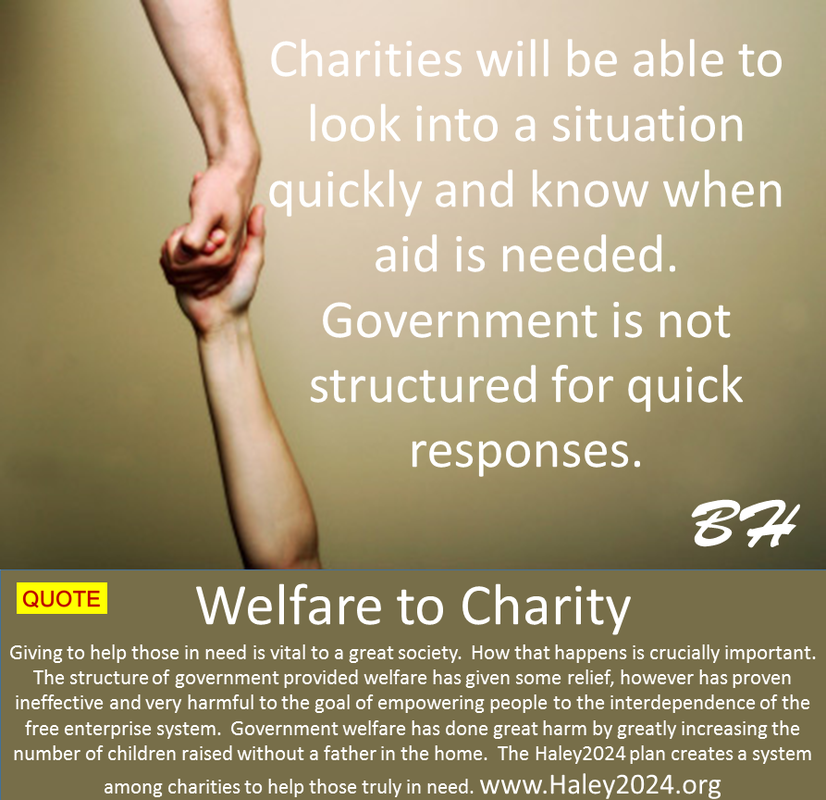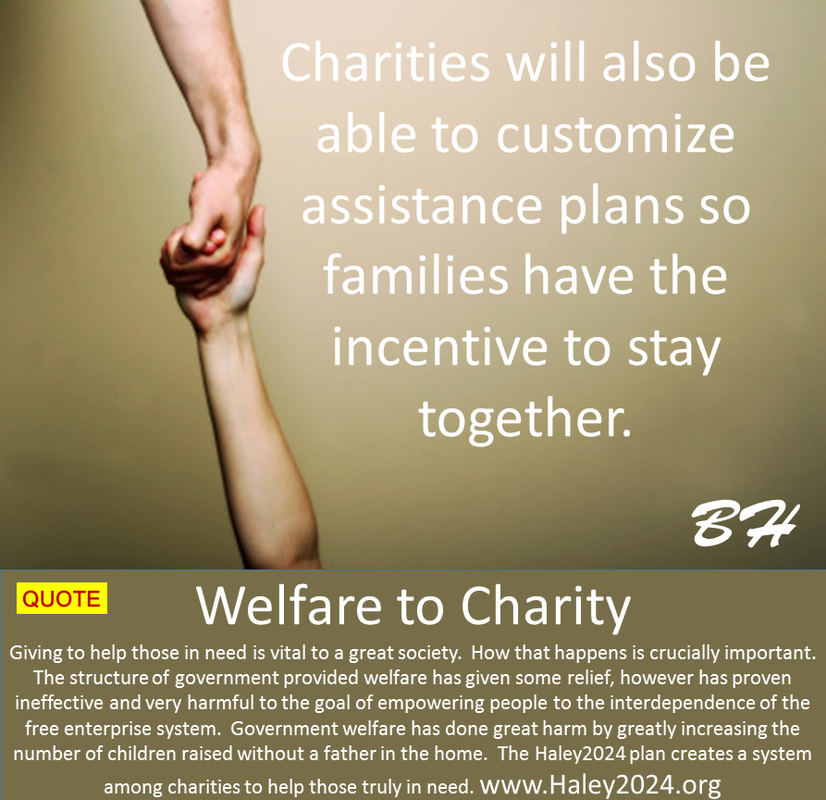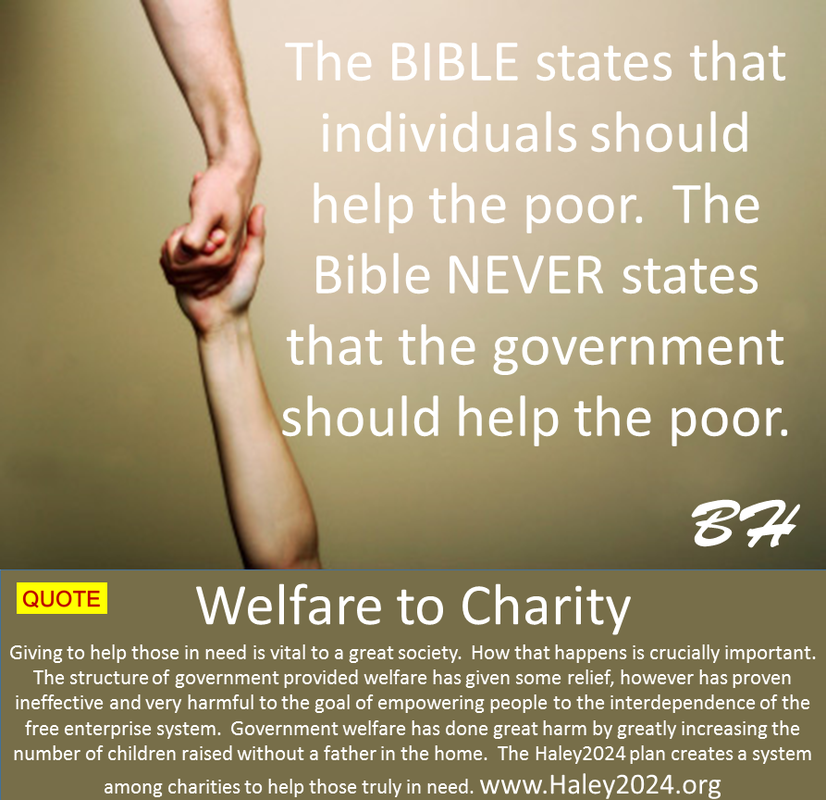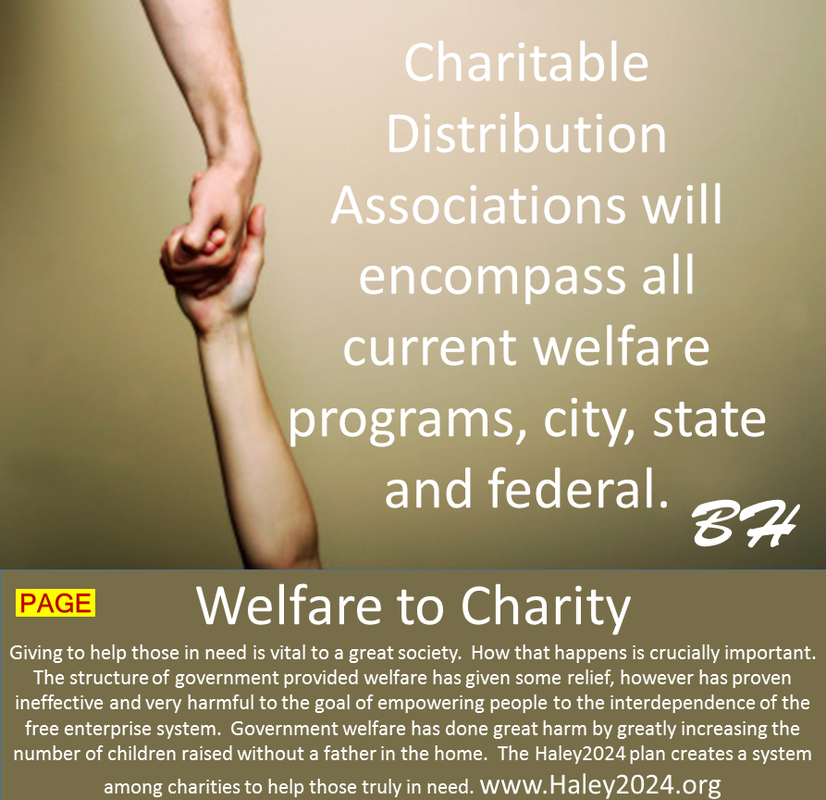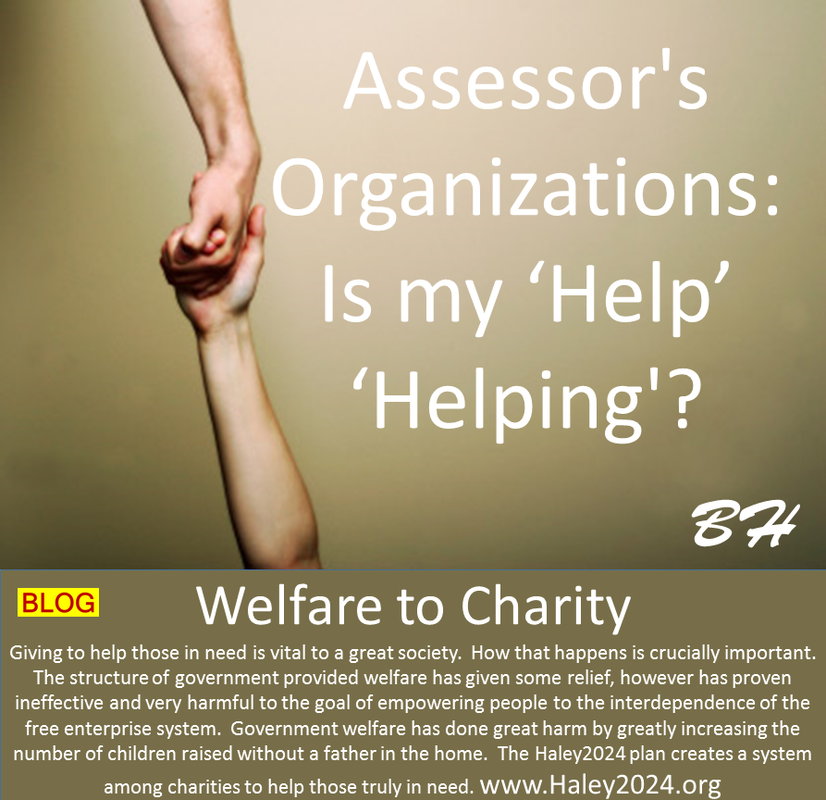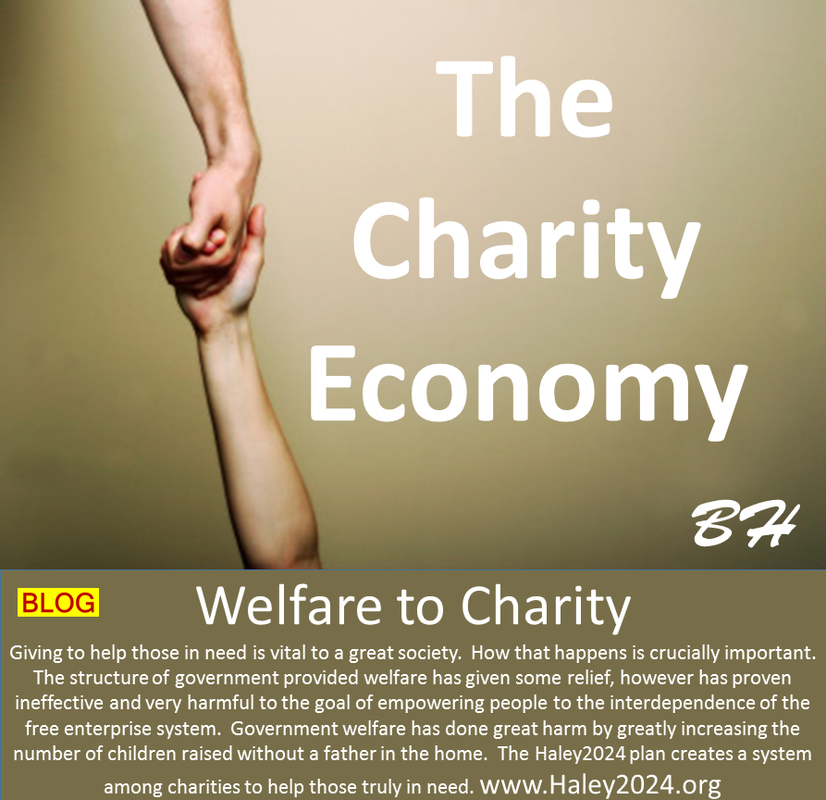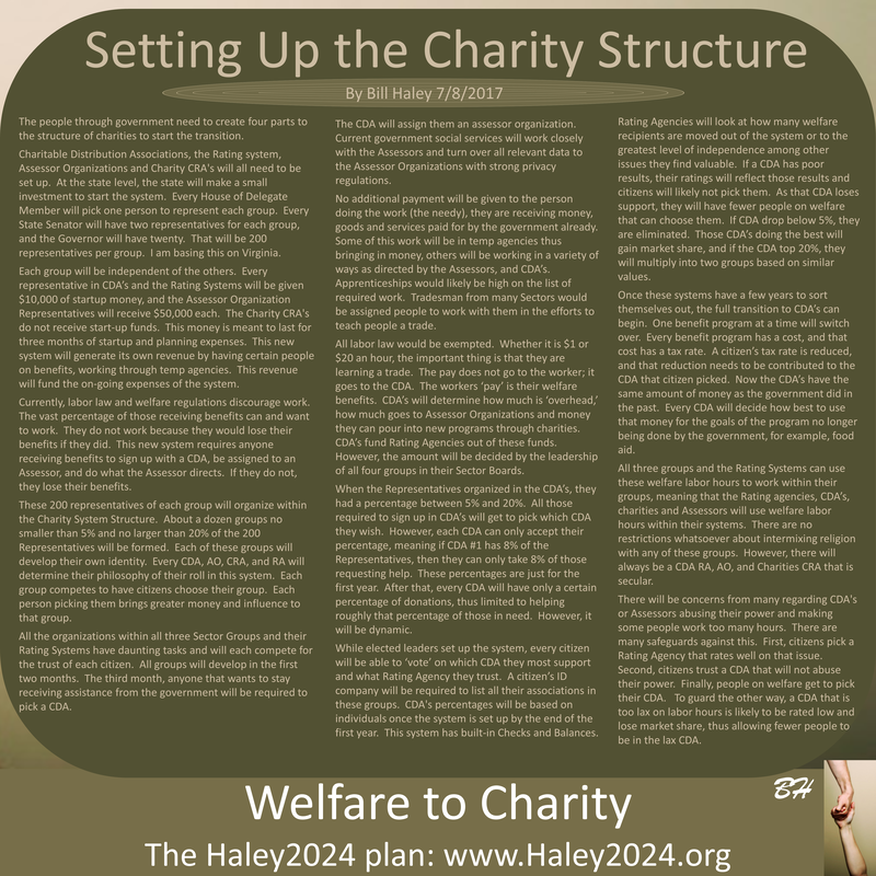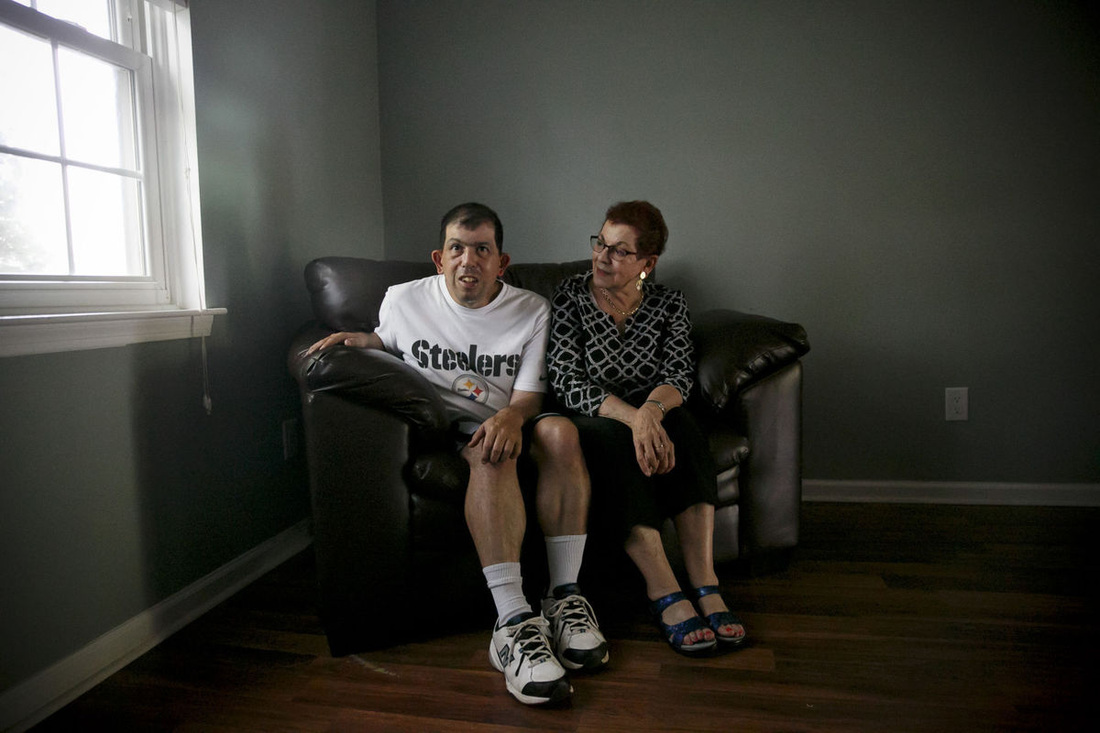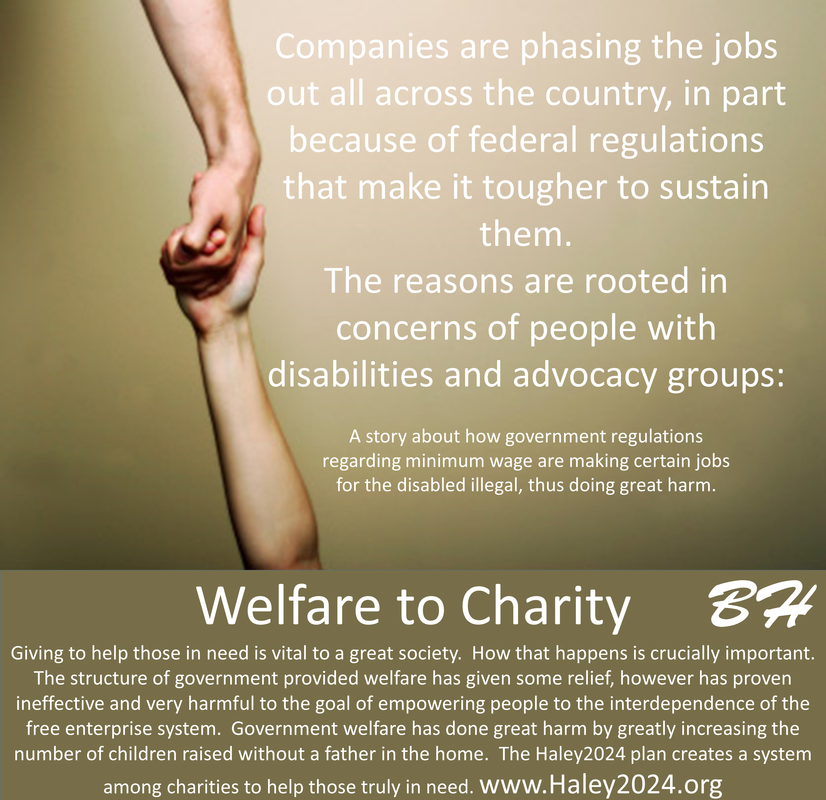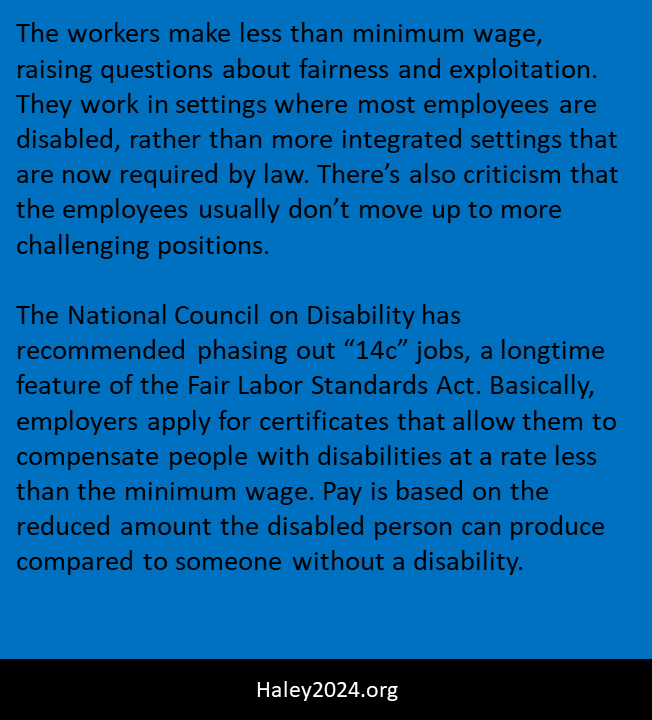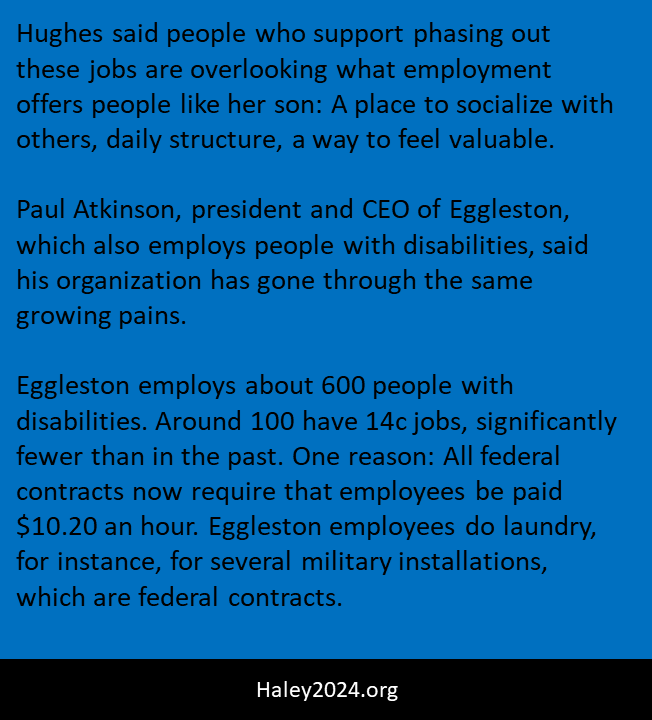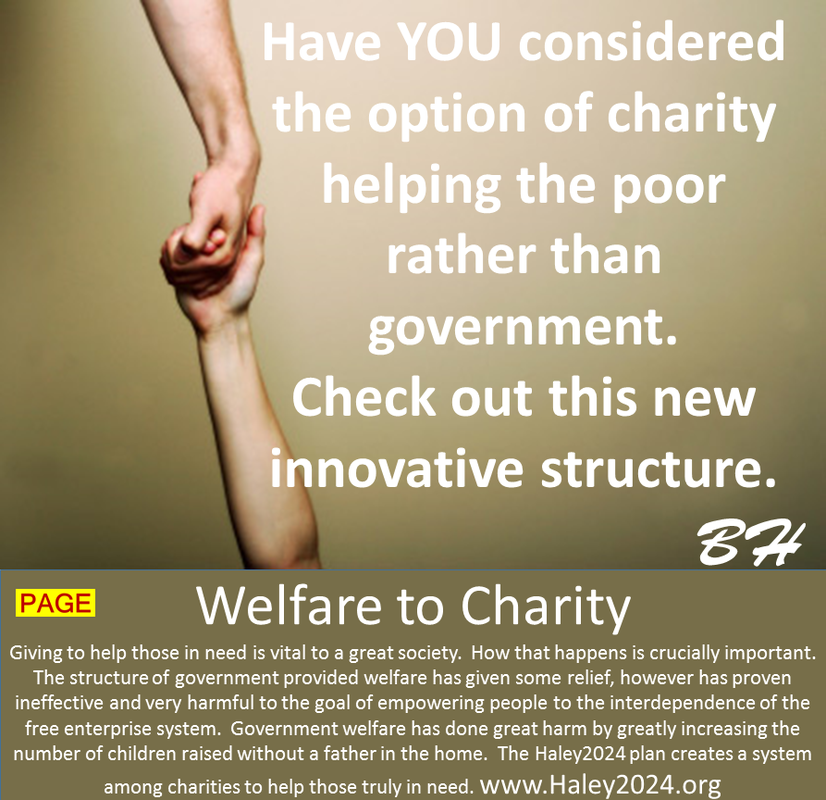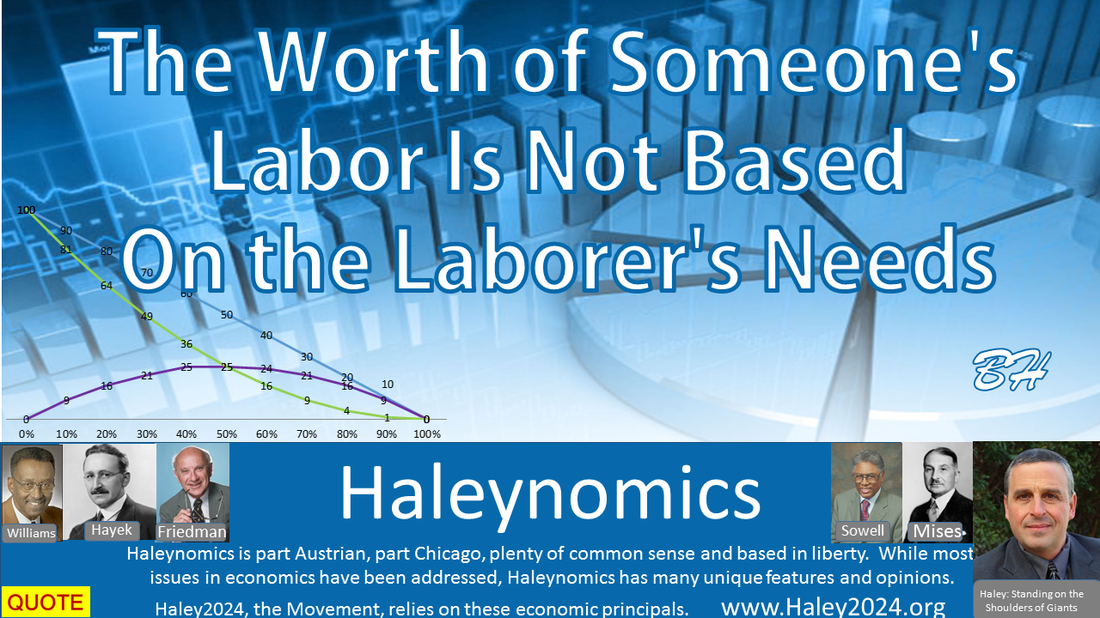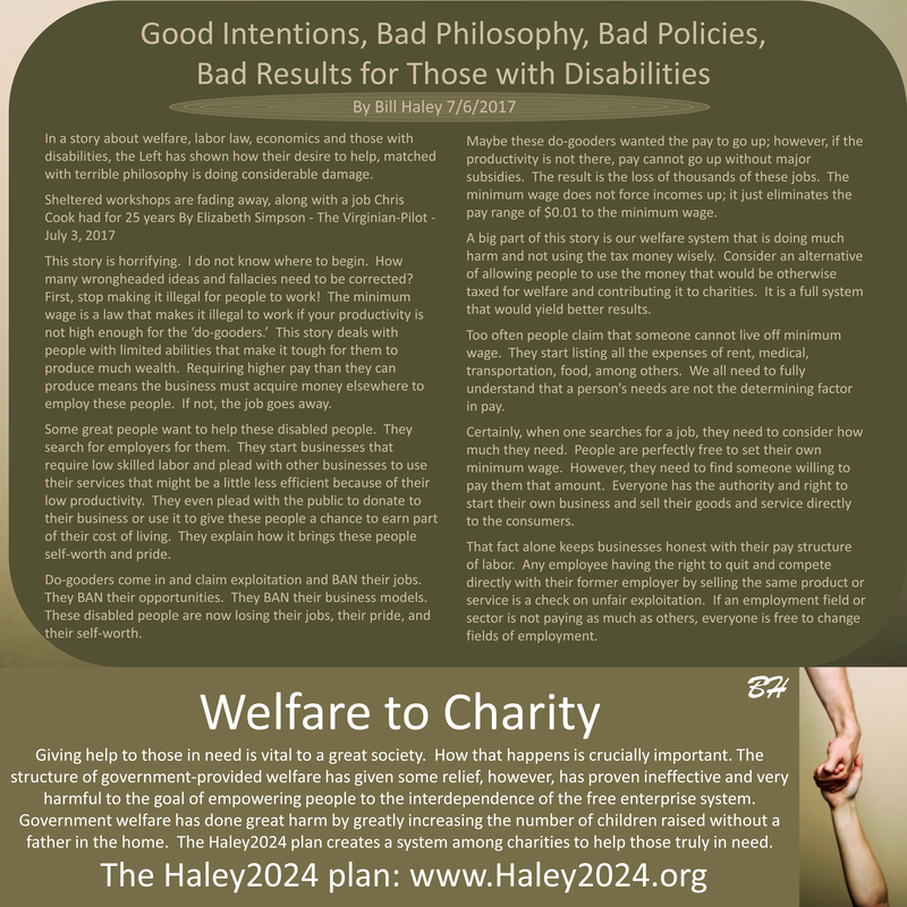| The people through government need to create four parts to the structure of charities to start the transition. Charitable Distribution Associations, the Rating system, Assessor Organizations and Charity CRA's will all need to be set up. At the state level, the state will make a small investment to start the system. Every House of Delegate Member will pick one person to represent each group. Every State Senator will have two representatives for each group, and the Governor will have twenty. That will be 200 representatives per group. I am basing this on Virginia. |
| Each group will be independent of the others. Every representative in CDA’s and the Rating Systems will be given $10,000 of startup money, and the Assessor Organization Representatives will receive $50,000 each. The Charity CRA's do not receive start-up funds. This money is meant to last for three months of startup and planning expenses. This new system will generate its own revenue by having certain people on benefits, working through temp agencies. This revenue will fund the on-going expenses of the system. |
| Currently, labor law and welfare regulations discourage work. The vast percentage of those receiving benefits can and want to work. They do not work because they would lose their benefits if they did. This new system requires anyone receiving benefits to sign up with a CDA, be assigned to an Assessor, and do what the Assessor directs. If they do not, they lose their benefits. |
| These 200 representatives of each group will organize within the Charity System Structure. About a dozen groups no smaller than 5% and no larger than 20% of the 200 Representatives will be formed. Each of these groups will develop their own identity. Every CDA, AO, CRA, and RA will determine their philosophy of their roll in this system. Each group competes to have citizens choose their group. Each person picking them brings greater money and influence to that group. |
| All the organizations within all three Sector Groups and their Rating Systems have daunting tasks and will each compete for the trust of each citizen. All groups will develop in the first two months. The third month, anyone that wants to stay receiving assistance from the government will be required to pick a CDA. The CDA will assign them an assessor organization. Current government social services will work closely with the Assessors and turn over all relevant data to the Assessor Organizations with strong privacy regulations. |
| No additional payment will be given to the person doing the work (the needy), they are receiving money, goods and services paid for by the government already. Some of this work will be in temp agencies thus bringing in money, others will be working in a variety of ways as directed by the Assessors, and CDA’s. Apprenticeships would likely be high on the list of required work. Tradesman from many Sectors would be assigned people to work with them in the efforts to teach people a trade. |
| All labor law would be exempted. Whether it is $1 or $20 an hour, the important thing is that they are learning a trade. The pay does not go to the worker; it goes to the CDA. The workers ‘pay’ is their welfare benefits. CDA’s will determine how much is ‘overhead,’ how much goes to Assessor Organizations and money they can pour into new programs through charities. CDA’s fund Rating Agencies out of these funds. However, the amount will be decided by the leadership of all four groups in their Sector Boards. |
| When the Representatives organized in the CDA’s, they had a percentage between 5% and 20%. All those required to sign up in CDA’s will get to pick which CDA they wish. However, each CDA can only accept their percentage, meaning if CDA #1 has 8% of the Representatives, then they can only take 8% of those requesting help. These percentages are just for the first year. After that, every CDA will have only a certain percentage of donations, thus limited to helping roughly that percentage of those in need. However, it will be dynamic. |
| While elected leaders set up the system, every citizen will be able to ‘vote’ on which CDA they most support and what Rating Agency they trust. A citizen’s ID company will be required to list all their associations in these groups. CDA's percentages will be based on individuals once the system is set up by the end of the first year. This system has built-in Checks and Balances. |
| Rating Agencies will look at how many welfare recipients are moved out of the system or to the greatest level of independence among other issues they find valuable. If a CDA has poor results, their ratings will reflect those results and citizens will likely not pick them. As that CDA loses support, they will have fewer people on welfare that can choose them. If CDA drop below 5%, they are eliminated. Those CDA’s doing the best will gain market share, and if the CDA top 20%, they will multiply into two groups based on similar values. |
| Once these systems have a few years to sort themselves out, the full transition to CDA’s can begin. One benefit program at a time will switch over. Every benefit program has a cost, and that cost has a tax rate. A citizen’s tax rate is reduced, and that reduction needs to be contributed to the CDA that citizen picked. Now the CDA’s have the same amount of money as the government did in the past. Every CDA will decide how best to use that money for the goals of the program no longer being done by the government, for example, food aid. |
| All three groups and the Rating Systems can use these welfare labor hours to work within their groups, meaning that the Rating agencies, CDA’s, charities and Assessors will use welfare labor hours within their systems. There are no restrictions whatsoever about intermixing religion with any of these groups. However, there will always be a CDA RA, AO, and Charities CRA that is secular. |
| There will be concerns from many regarding CDA's or Assessors abusing their power and making some people work too many hours. There are many safeguards against this. First, citizens pick a Rating Agency that rates well on that issue. Second, citizens trust a CDA that will not abuse their power. Finally, people on welfare get to pick their CDA. To guard the other way, a CDA that is too lax on labor hours is likely to be rated low and lose market share, thus allowing fewer people to be in the lax CDA. |
